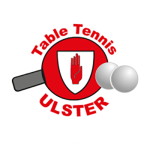Irish Table Tennis Association Ltd
ULSTER BRANCH
What is child abuse?
Child abuse occurs when a person in a position of authority or power causes significant harm to a child or young person. Research indicates that this harm can take place in many settings, including sport and that the perpetrator is more often an adult whom children and young people know and place their trust in, rather than a stranger.
The Children (NI) Order 1995 uses the term ‘significant harm’ rather than ‘child abuse’. This includes: ill treatment, exploitation, the impairment of health or the impairment of development (physical, intellectual, emotional, social, behavioural). ‘Significant harm’ is the ‘threshold’ or benchmark that justifies the state to intervene in family life. Any intervention is based on the balance of probability, the child is at risk.
There are five main categories of abuse:
- Physical
- Neglect
- Sexual
- Emotional
- Exploitation
Recognition, responding, recording and reporting child abuse.
Recognition and acceptance by those providing care and training for children that a child they know could be at risk of harm or that an adult would deliberately harm a child is the first step to protecting children. Signs of abuse can be physical, behavioural, or developmental. A cluster or pattern of signs is the most reliable indicator of abuse.
Indicators should be noted. It is important, however, to realise that all these indicators can occur in other situations where abuse has not been a factor.
Bullying behaviour
The Northern Ireland Anti- Bullying Forum ( www.endbullying.org.uk ) defines bullying as the repeated behaviour that intentionally hurts, harms or adversely affect the rights or needs of another or others.
It can take many forms, but the three main types are:
• physical (eg. hitting, kicking, theft);
• verbal (eg. racist or sectarian remarks, threats, name-calling); and
• emotional (eg. isolating an individual from the activities and social acceptance of his peer group)
Grounds for concern
Consider the possibility of child abuse if there are reasonable grounds for concern. Reasonable grounds for concern (adopted from the Area Child Protection Committee’s Regional Policy and Procedures) exist when
there is:
- a specific indication from a child that s/he has been abused;
- an account by a person who saw the child being abused;
- evidence, such as an injury or behaviour which is consistent with abuse and unlikely to be caused another way;
- an injury or behaviour which is consistent both with abuse and with an innocent explanation, but where there are corroborative indicators supporting the concern that it may be a case of abuse. An example of this would be a pattern of injuries, an implausible explanation, other indications of abuse, dysfunctional behaviour;
- consistent indication, over a period of time, that a child is suffering from emotional or physical neglect
